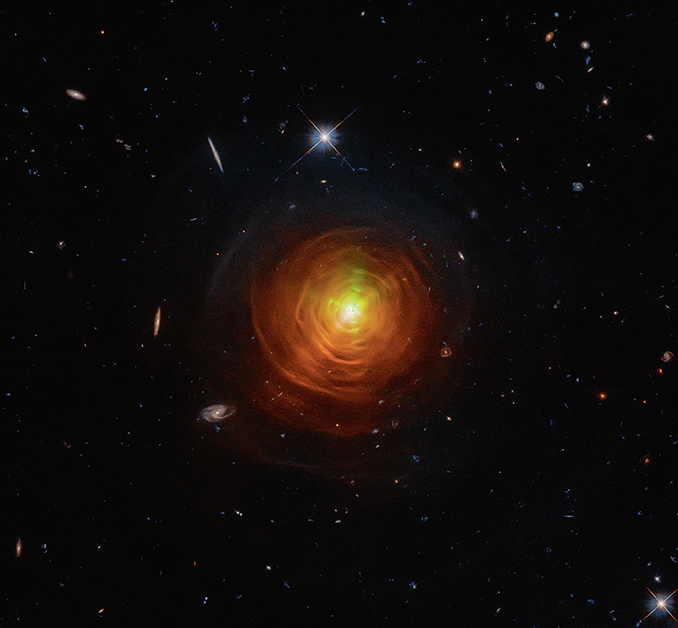
The star hidden inside this spectacular dusty cocoon is not only a red giant, but also a rare stellar breed known as a carbon star. Named CW Leonis, it’s the closest example of a carbon star to us, found at a distance of 400 light years in the constellation of Leo, the Lion.
A carbon star is an evolved star that has begun ejecting its outer layers into space, exposing its carbon-rich interior. The ejected material condenses into dust, which now shrouds CW Leonis, forming the beginning of what will blossom into a planetary nebula, perhaps not too dissimilar to the Ring Nebula or the Dumbbell Nebula.
Despite its relative proximity to the Solar System, CW Leonis’ true nature was discovered only as recently as 1969, when it was observed by the now defunct Caltech Infrared Telescope on Mount Wilson in California.
CW Leonis was originally a star not too dissimilar to our Sun, just a little hotter and between three and five times more massive. The nebula has been dated at 69,000 years old, and the star is shedding material so quickly that 1.4 solar masses of its initial mass is now found in its burgeoning dust shroud. Inside this cocoon, the star will gradually transform into a white dwarf.
However, there are a couple of twists to the tail. One is that CW Leonis may have an unseen companion star, whose gravity is helping to shape the nebula. The other twist relates to the rays of light seen shining from the star in this image from the Hubble Space Telescope’s Wide-Field Camera 3. These rays have been seen to fluctuate in brightness during the past 15 years. Astronomers don’t know why, but one possibility is that the light is shining through gaps in the dust, and as the dust clouds shift, the gaps widen or narrow, altering the brightness of those rays.



